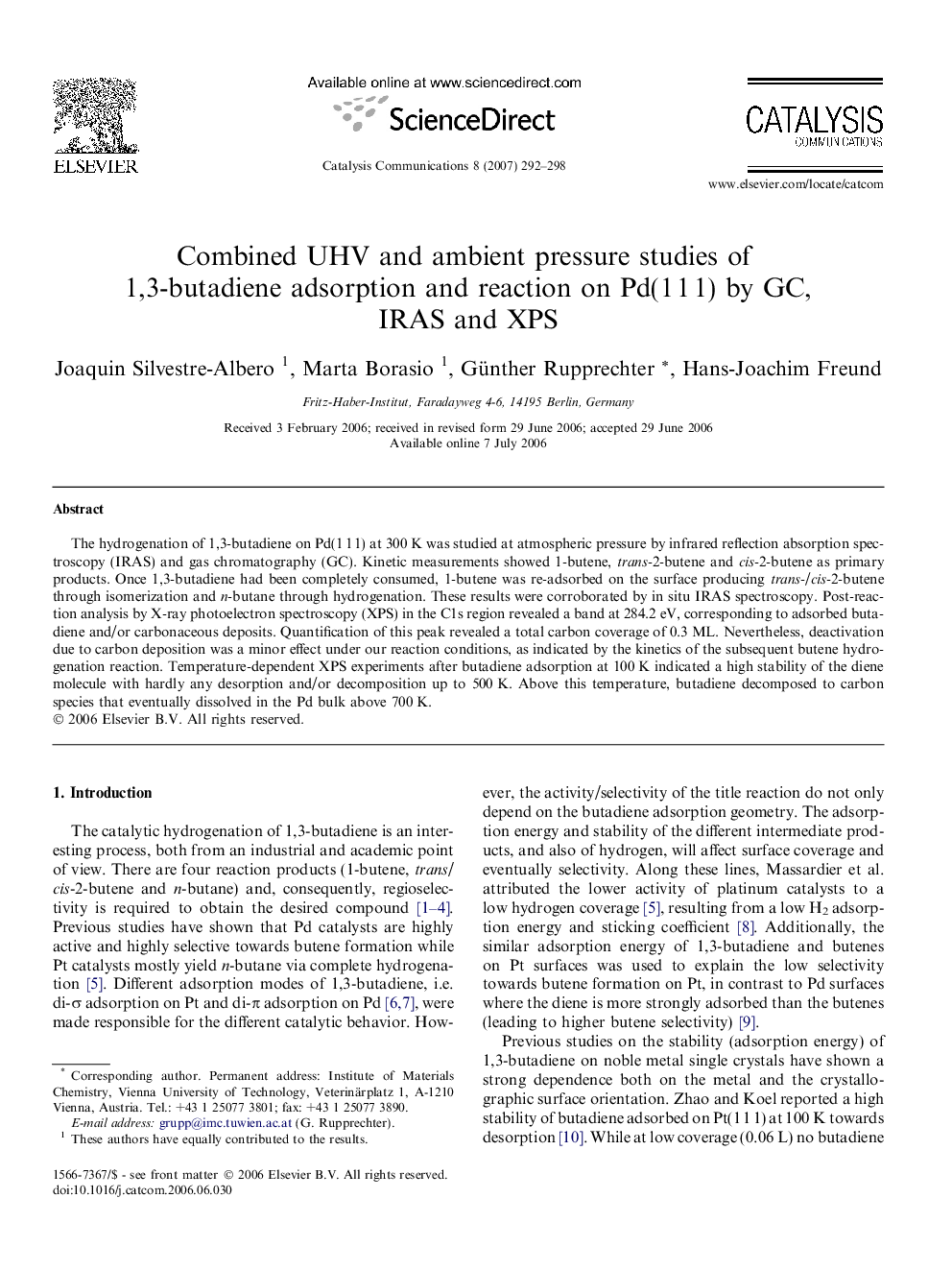| Article ID | Journal | Published Year | Pages | File Type |
|---|---|---|---|---|
| 52835 | Catalysis Communications | 2007 | 7 Pages |
The hydrogenation of 1,3-butadiene on Pd(1 1 1) at 300 K was studied at atmospheric pressure by infrared reflection absorption spectroscopy (IRAS) and gas chromatography (GC). Kinetic measurements showed 1-butene, trans-2-butene and cis-2-butene as primary products. Once 1,3-butadiene had been completely consumed, 1-butene was re-adsorbed on the surface producing trans-/cis-2-butene through isomerization and n-butane through hydrogenation. These results were corroborated by in situ IRAS spectroscopy. Post-reaction analysis by X-ray photoelectron spectroscopy (XPS) in the C1s region revealed a band at 284.2 eV, corresponding to adsorbed butadiene and/or carbonaceous deposits. Quantification of this peak revealed a total carbon coverage of 0.3 ML. Nevertheless, deactivation due to carbon deposition was a minor effect under our reaction conditions, as indicated by the kinetics of the subsequent butene hydrogenation reaction. Temperature-dependent XPS experiments after butadiene adsorption at 100 K indicated a high stability of the diene molecule with hardly any desorption and/or decomposition up to 500 K. Above this temperature, butadiene decomposed to carbon species that eventually dissolved in the Pd bulk above 700 K.
